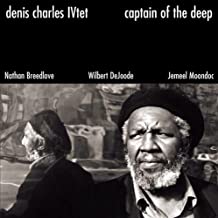
Daily Dose Of Jazz…
Denis Charles was born in St. Croix, Virgin Islands on December 4, 1933 and first played bongos at age seven with local ensembles in the Virgin Islands. Moving to New York City in 1945, he gigged frequently around town and in 1954 began working with Cecil Taylor, and the pair collaborated for the next four years. Following his work with Taylor, he played with Steve Lacy, Gil Evans, and Jimmy Giuffre. He befriended Ed Blackwell, and the two influenced each other.
Recording with Sonny Rollins on a calypso-tinged set, Denis then returned to play with Lacy until 1964. He worked with Archie Shepp and Don Cherry in ‘67 and then disappeared from the jazz scene until 1971. In the 1970s and 1980s he played regularly on the New York jazz scene with Frank Lowe, David Murray, Charles Tyler, Billy Bang, and others, and also played funk, rock, and traditional Caribbean music.
Between 1989~1992 drummer Denis Charles released three albums as a leader before passing away of pneumonia in his sleep on March 26, 1998 in New York City in 1998, four days after a five-week European tour with the Borgmann/Morris/Charles (BMC) Trio, with Wilber Morris and Thomas Borgmann. In 2002 Veronique N. Doumbe released a film documentary Denis A. Charles: An Interrupted Conversation about his life.
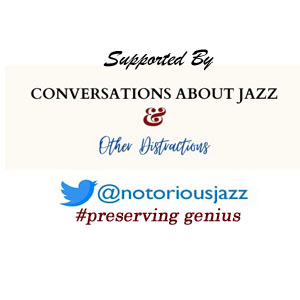
More Posts: bandleader,composer,drums,history,instrumental,jazz,music
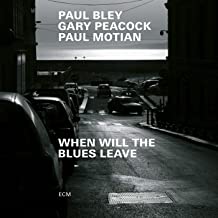
Daily Dose Of Jazz…
Paul Bley was born Hyman Paul Bley on November 10, 1932 in Montreal, Quebec. His adoptive parents were Betty Marcovitch and Joe Bley, who owned an embroidery factory. When he was five years old he studied violin, but by seven he took up the piano. He received a junior diploma from the McGill Conservatory in Montreal when he was 11 and at thirteen he formed a band which played at summer resorts in Ste. Agathe, Quebec. His teenage years saw him he played with touring American bands, including Al Cowan’s Tramp Band. In 1949 at the start of his high school senior year, Oscar Peterson asked him to fulfill his contract at the Alberta Lounge in Montreal. The next year he left Montreal for New York City and Juilliard.
The Fifties saw Paul returning to Montreal, establishing the Jazz Workshop and inviting Charlie Parker, he played and recorded with him. Returning to New York City he hired Jackie McLean, Al Levitt, and Doug Watkins to play an extended gig at the Copa City on Long Island. He did a series of trio recordings with Al Levitt and Peter Ind, toured as Lester Young and the Paul Bley Trio, and performed with tenor saxophonist Ben Webster at that time. He then conducted for bassist Charles Mingus on the Charles Mingus and His Orchestra album and in 1953, Mingus produced the Introducing Paul Bley album for his label, Debut Records with Mingus on bass and drummer Art Blakey. A 1954 call from Chet Baker put him with the quintet at Jazz City in Hollywood, California that led to a tour with singer Dakota Staton.
Staying in Los Angeles he evolved his trio into a quintet with young avant~garde musicians Dave Pike, Don Cherry, Ornette Coleman, Charlie Haden, and Billy Higgins. Through the Sixties, he worked with Jimmy Giuffre, Sonny Rollins, Coleman Hawkins, Bill Dixon, Roswell Rudd, Cecil Taylor, Archie Shepp, Carla Bley, Michael Mantler, Sun Ra, and others. The Seventies had him and Carol Goss founding the production company Improvising Artists. The label issued Jaco, the debut recording of Pat Metheny on electric guitar and Jaco Pastorius on electric bass, with Bley on electric piano and Bruce Ditmas on drums. The label would release IAI records and videos of Jimmy Giuffre, Lee Konitz, Dave Holland, Marion Brown, Gunter Hampel, Lester Bowie, Steve Lacy, Ran Blake, Perry Robinson, Naná Vasconcelos, John Gilmore, two solo piano records by Sun Ra, and others. Bley and Goss are credited in a Billboard cover story with the first commercial music video.
Through the Eighties and Nineties, he continued to record, tour prolifically through Europe, Japan, South America, and the United States. in 1993 a relative from the New York branch of the Bley family walked into the Sweet Basil jazz club in New York City and informed him that his father was actually his biological parent. In the new millennium, he became a part-time faculty member of the New England Music Conservatory.
His last public performances were in 2010 playing a solo piano concert at the La Villette Jazz Festival in Paris, followed by a duo with Charlie Haden at BlueNote in New York City during a full moon. Pianist Paul Bley passed away of natural causes on January 3, 2016, at home in Stuart, Florida, at the age of 83.
More Posts: bandleader,composer,history,instrumental,jazz,music,piano
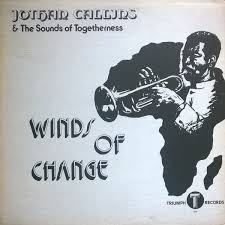
Daily Dose Of Jazz…
Jothan Callins was born October 29, 1942 in Birmingham, Alabama. The third of nine children he received his childhood education in Ensley at Council Elementary School and Western-Olin High School. Obtaining a Bachelor of Arts degree from Florida A&M University, he subsequently became a member of the Lionel Hampton Orchestra and performed with Max Roach, Milt Jackson, Stevie Wonder, Sun Ra, Cecil McBee, Consuela Lee, George Coleman, Geri Allen, Joseph Jennings, Jeff Watts and many others.
In 1978, Jothan became the first Jazz Artist-In-Residence for the Birmingham Public Schools and helped found the Alabama Jazz Hall of Fame and City Stages. In 1982, after receiving a fellowship at the University of Pittsburgh, he obtained a Masters’ Degree in Ethnomusicology and Jazz Studies and remained there for five years teaching jazz history. As a prolific, creative artist, Jothan was a performer, composer, arranger, educator, consultant, musical director, and cultural catalyst, who earned the respect and admiration of fans, musicians, and critics throughout the world.
With his band, The Sounds of Togetherness, he toured and performed around the United States and the world. He specialized in Jazz performances and workshops for children and adults. In the ‘90s, Callins founded the Birmingham Youth Jazz Ensemble, Inc. (BYJE), serving as Director until his death. Trumpeter, flugelhornist, electric bassist, and composer Jothan Callins, who was inducted into the Alabama Jazz Hall of Fame in 1979, passed away on April 30, 2005 at Baptist-Princeton Medical Center.
More Posts: bandleader,educator,electric bass,flugelhorn,history,instrumental,jazz,music,trumpet
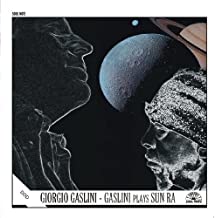
Daily Dose Of Jazz…
Giorgio Gaslini was born on October 22, 1929 in Milan, Italy and began performing aged 13 and recorded with his jazz trio at 16. In the 1950s and 1960s, Gaslini performed with his own quartet. He was the first Italian musician mentioned as a “new talent” in the Down Beat poll and the first Italian officially invited to the New Orleans Jazz Festival in 1976-77. He collaborated with leading American soloists, such as Anthony Braxton, Steve Lacy, Don Cherry, Roswell Rudd, Max Roach, but also with the Argentinian Gato Barbieri and Frenchman Jean-Luc Ponty.
Adapting the compositions of Albert Ayler and Sun Ra for solo piano, issued on the Soul Note label, he also composed the soundtrack of Michelangelo Antonioni’s La Notte, The Night, in 1961. In the early Seventies, he was the first holder of jazz courses at the Santa Cecilia Academy of Music in Rome.
As to contemporary music, he composed symphonic works, operas and ballets represented at the Scala Theatre in Milan and other Italian theatres. In addition from 1970 to 1977 he scored nine films, including Your Hands On My Body, Cross Current, and Kleinhoff Hotel. From 1991 to 1995, Gaslini composed works for Carlo Actis Dato’s Italian Instabile Orchestra.
Pianist, composer and conductor Giorgio Gaslini passed away on July 29, 2014 at age 84 in Borgo Val di Taro, Parma, Italy, where he had been living for years together with his longtime wife and fourteen dogs and cats.
More Posts: composer,conductor,history,instrumental,jazz,music,piano
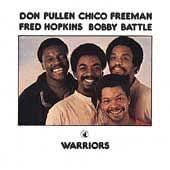
Daily Dose Of Jazz…
Fred Hopkins was born on October 11, 1947 in Chicago, Illinois and grew up in a musical family, listening to a wide variety of music from an early age. Attending DuSable High School, he studied music under Walter Dyett, who became well-known for mentoring and training musicians. Originally inspired to learn the cello, without one at the school Dyett steered him to the bass. After graduating from high school, while working at a grocery store he was encouraged to pursue music more seriously.
Hopkins soon began playing with the Civic Orchestra of Chicago, where he was the first recipient of the Charles Clark Memorial Scholarship, and studying with Joseph Gustafeste, principal bassist for the Chicago Symphony Orchestra at the time, as well as picking up piano duo gigs. He also began playing with Kalaparusha Maurice McIntyre, with whom he made his debut recording in 1970 Forces and Feelings. At that point he started becoming more serious about improvisation, playing with Muhal Richard Abrams’s Experimental Band and other related groups.
The early 1970s saw him forming a trio called Reflection with saxophonist Henry Threadgill and drummer Steve McCall. In 1975, he left Chicago, moved to New York City, regrouped with Threadgill and McCall, renamed their trio Air, and went on to tour and record extensively. He also joined the AACM, immersed himself in New York’s loft scene. Over the following decades, he increasingly gained recognition, gigging with Roy Haynes.
He performed and recorded with Muhal Richard Abrams, Hamiet Bluiett, Anthony Braxton, Marion Brown, Arthur Blythe, Oliver Lake, David Murray, Diedre Murray, and Don Pullen, as well as with various groups led by Threadgill. Moving back to Chicago in 1997, he continued to perform, tour, and record with a wide variety of musicians. Double bassist Fred Hopkins passed away on January 7, 1999 at age 51 of heart disease at the University of Chicago Hospital.
More Posts: bandleader,bass,history,instrumental,jazz,music


